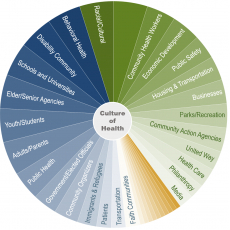
What is health equity? How is it different from health disparities?
Health equity is attainment of the highest level of health for all people – valuing everyone equally by focusing on societal efforts to address avoidable inequalities, historical and contemporary injustices, and the elimination of health and health care disparities. Health disparities are differences in health indicators or outcomes among groups of people. Those who have systematically experienced greater obstacles to health, based on their race or ethnic group, socioeconomic status, gender, sexual orientation, geographic location etc. often bear the burden of worse health outcomes. (Definitions adapted from Healthy People 2020)
What can we do to promote and build health equity?
How do we as a society attain health equity? How do we ensure health and safety in the places where we live, work, and play? How do we ensure equitable access to information, fair distribution of resources, and empowerment of citizens? There is increasing rationale for multi-sector approaches that intentionally promote an equity agenda throughout the community health improvement process. Scarce resources can be directed to address the underlying factors that have led to consistently poorer health outcomes for historically marginalized groups. In Embracing Equity in Community Health Improvement, HRiA offers a step-by-step approach to integrating a health equity agenda into health improvement, with key guiding questions, tools, and data sources to help organizations take health equity from theory to practice. Our strategies are based on 30 years of experience providing capacity building and technical assistance on healthy communities both locally and nationally. View our toolkit here.
More information about HRiA’s Community Health Improvement work

